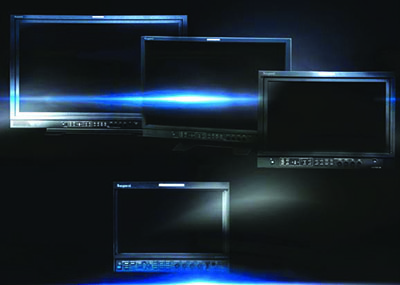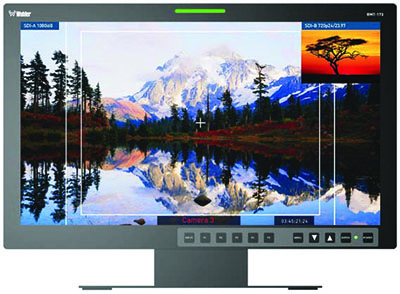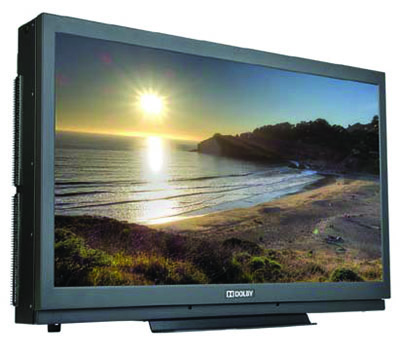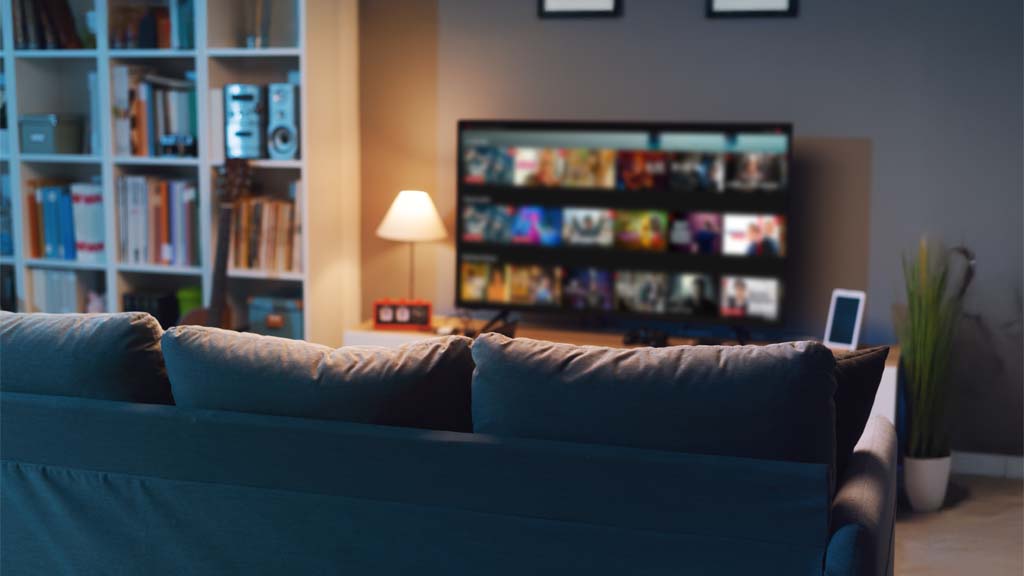Flexibility, Form Define New Monitor Design

At last month’s IBC, Ikegami introduced the 25-inch HEM-2570W and 17-inch HEM-1770, a family of panel monitors whose OLED technology is designed to heightencolors and offer accurate black reproduction.SAN FRANCISCO—Sometimes quiet but never still, a burst of new monitors has hit the market and are sitting center stage. When it comes to reference monitors the specifications are even more specific: high contrast; multiscreen; flexible enough to install in a large control room or in the confines of an OB van. And whether they are large or small—whether they are the centerpiece of a control room or are squeezed into an ENG truck—the priorities are the same: precise color, proper brightness, specific resolution.
Monitors also come with other precise requirements, namely the ability to share and share alike: for three or four people to view the same monitor and see the same image, same brightness, same clarity at the same time. Today’s reference monitors also must offer solutions for quickly gauging color and exposure; as such, a growing number of monitors are offering the pre-defined profiles known as LUT (look up table), that provide better representations of the final images that will be broadcast.
A wealth of solutions were shown at IBC last month and at NAB in the spring, giving a glimpse at what’s new.
IN THE STUDIO OR IN THE FIELD
Giving flexibility to the production team was a priority during the development of the Wohler RMT-173, a monitor that has the ability to be configured in myriad ways: as a large screen with a mini corner image, as a dual-split display or as a monitor with a large single image. The monitor is designed for ENG or studio environments, and features an 8-bit 1920 x 1080 TFT/LCD screen and 12-bit image processing. New scaled-down models from Wohler include the MPEG series of monitors like the 4290, a dual 9-inch LCD video monitor with MPEG analysis and ATSC table decode capability.
Across the spectrum, monitors continue to take two issues into account: format flexibility and form factor.
DOLBY VISION
Taking a new tact on the development on high-resolution monitors was the impetus behind Dolby Lab’s Dolby Vision, a new imaging technology standard that was formally introduced at the 2014 International CES in January. “We’ve developed a whole new standard for dynamic high-range imaging,” said Rob Carroll, a senior director at Dolby. The production company Deluxe is the first company to have installed a monitor with Dolby Vision; from there the technology will be piloted at other post production facilities in Hollywood and internationally over the next 12 months, after which it will be generally available in the marketplace, according to Carroll.

Wohler’s RMT 173 monitor What makes Dolby Vision unique is that it offers increased brightness, wider color gamut and wider contrast ratio of an Ultra HD or HD signal by augmenting the fidelity of the signals.
The professional video industry's #1 source for news, trends and product and tech information. Sign up below.
“It’s not just brightness, but how much information you can actually see in dark areas and light areas,” he said. “As we’ve gone from film to digital acquisition with digital cinema cameras, the dynamic range of those cameras and higher rate workflows means that the acquisition of images have a far greater range than our technology today is capable of showing,” he said. Sets with the new technology may begin to be released in 2015, the company said.
For professional reference requirements, one of Dolby’s newest reference monitors is the flat-panel PRM-4220, a strategic move away from traditional CRT models, with the ability to handle high frame rates of 48 and 60 fps. The 42-inch monitor offers 1920x1080 pixel resolution, and delivers a wide viewing angle of 45 degrees on either side of the center point. Like other Dolby models, the monitor uses the LightSpace color management system to validate image calibration and generate test patterns.
DEMAND FOR 4K AND OLED?
Responding directly to market demand, a growing number of manufacturers are also showcasing 4K reference monitors that are designed to recognize and display 4K sharpness.
To keep tabs on ultra HD program material during all stages of the origination and post state, Canon’s DPV3010 4K reference display offers uniform brightness across the whole screen, wide-angle viewing, and 4K image formats. The monitor also offers internal upconversion to 4K Ultra HD from HD and 2K sources, according to the company.

Dolby PRM-4220 Professional Reference Monitor OLED is staying in the headlines, too, as a number of manufacturers continue to tout the benefits of OLED technology for reference monitors, from Ikegami to Flanders Scientific to Sony. New HD OLED monitors from Ikegami, introduced at IBC last month include the 25-inch HEM- 2570W and 17-inch HEM-1770, a family of panel monitors whose OLED technology is designed to heighten colors and offer accurate black reproduction. Sony, too, has embraced OLED technology for its high-contrast black performance, wide color gamut, and quick pixel response, and has three series of OLED monitors and displays: the Trimaster EL series, BVM A and the compact PVM series. Like others on the market, Sony is paying close attention to that dilemma unique to monitors: how to give an accurate color snapshot regardless of where you’re standing when you look at the monitor? The newest Sony OLED versions feature a wider viewing angle that reduces color shift, the company said.
For smaller applications, Flanders Scientific recently introduced a small fry: the 9-inch BM090, a 1920x1080 resolution HD monitor that can monitor two signals on screen simultaneously with the same bit depth, resolution and color gamut of larger monitors. The company also introduced a 42-inch professional LCD monitor, the CM420TD, a native HD LCD panel with 12-bit signal support and 3D-capable display.
A selection of Panasonic studio and field monitors—plus some that can be used in either place—include the BT-4LH310P, a 31-inch LCD monitor with 4096x2160 resolution designed for editing or live viewing of 4K or HD dailies. The 4K 10-bit image processing panel reproduces up to 1.07 billion colors and offers a 3D look up table with color correction, high contrast and 10-bit image processing.
Susan Ashworth is the former editor of TV Technology. In addition to her work covering the broadcast television industry, she has served as editor of two housing finance magazines and written about topics as varied as education, radio, chess, music and sports. Outside of her life as a writer, she recently served as president of a local nonprofit organization supporting girls in baseball.

